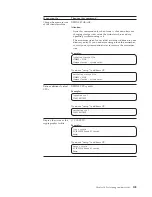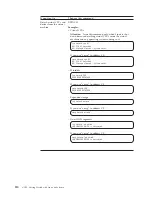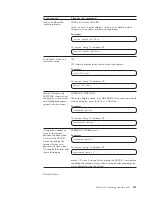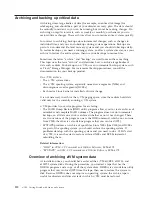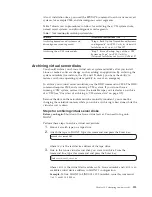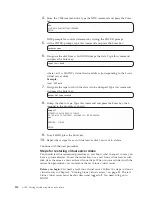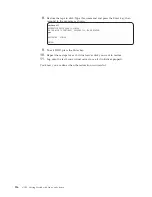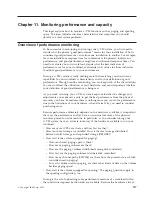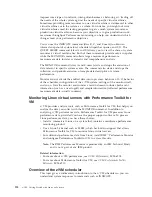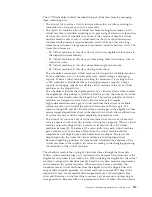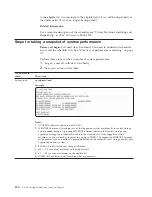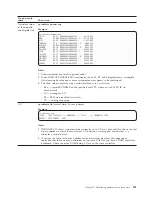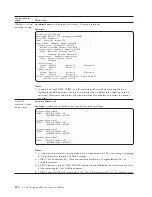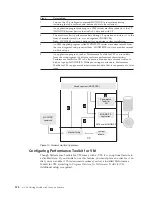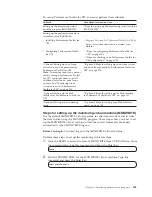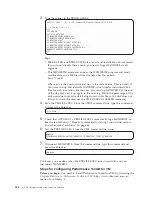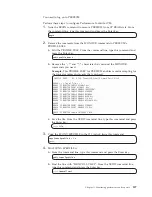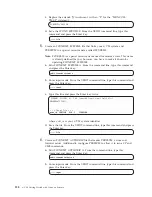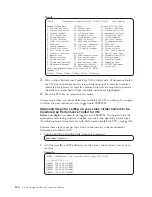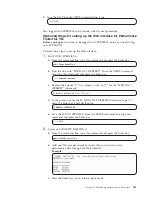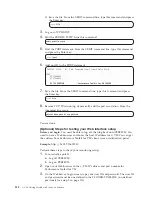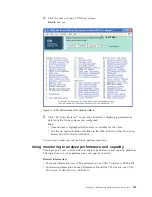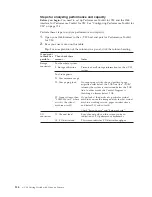
The z/VM scheduler controls the dispatching of virtual machines by managing
three scheduling lists:
v
The
dormant list
contains a list of virtual machines that are idle or waiting for
completion of a long event, such as a tape read.
v
The
eligible list
contains a list of virtual machines waiting for resources. Each
virtual machine is classified according to its processing characteristics (known as
its
transaction class
). A scheduler
transaction
is the amount of time the virtual
machine remains able to run. A virtual machine that runs short transactions
consumes little processor resource between waits, while one that runs long
transactions consumes a large amount of processor resource between waits. The
transaction classes are:
– E0. Virtual machines in this class do not wait in the eligible list, but move to
the dispatch list immediately.
– E1. Virtual machines in this class are those doing short transactions, such as
interactive users.
– E2. Virtual machines in this class do medium-length transactions.
– E3. Virtual machines in this class do long transactions.
The scheduler assesses each virtual machine for its need for available resources.
For the scheduler,
resources
include processors, central storage, and paging
capacity. When a virtual machine is waiting for resources, it is waiting for the
z/VM scheduler to decide that there is enough processor capacity, storage
capacity, and paging capacity to add this virtual machine to the set of virtual
machines on the dispatch list.
The scheduler calculates the eligible priority of a virtual machine when it enters
the eligible list. This priority is called the
deadline priority
, the time by which the
virtual machine should enter the dispatch list. The relative priorities of virtual
machines are designed to slow down virtual machines that require
highly-demanded resources, grant virtual machines their shares of available
system resources, and control the amount of resource each class gets. For
instance, though E2 and E3 virtual machines wait longer in the eligible list, they
receive longer elapsed time slices in the dispatch list, which allows efficient use
of system resources and the rapid completion of interactive work.
v
The
dispatch list
contains a list of virtual machines that can run or whose wait
state is expected to be short (for instance, waiting for a page-in). When a virtual
machine enters the dispatch list, it retains its transaction class; E0 virtual
machines become Q0, E1 become Q1, and so forth. Also, each virtual machine
gets a
deadline priority
, the time of day when the virtual machine should
complete its next dispatch time slice under ideal conditions. The lower the
dispatch priority, the closer the virtual machine is to being dispatched.
Because dispatching priorities are dynamically calculated, the sequence of the
virtual machines in the dispatch list varies according to the changing operating
characteristics of the virtual machines.
The scheduler controls the cycling of virtual machines through the three lists.
When a virtual machine logs on, it is placed in the dormant list and moved to the
eligible list only when it has work to do. When entering the eligible list, the virtual
machine is assigned its deadline priority based on its share, resource requirement,
and contention for system resources. When resources become available, the
scheduler moves virtual machines from the eligible list to the dispatch list and
assigns them dispatch priorities. As virtual machines consume CPU time in the
dispatch list, they are examined and reassigned priority as their dispatch time
slices end. Because a virtual machine consumes a given amount of processing or
storage resource, becomes idle, or is preempted in favor of other virtual machines
Chapter 11. Monitoring performance and capacity
119
Summary of Contents for ZVM - FOR LINUX V6 RELEASE 1
Page 1: ...z VM Getting Started with Linux on System z version 6 release 1 SC24 6194 00...
Page 2: ......
Page 3: ...z VM Getting Started with Linux on System z version 6 release 1 SC24 6194 00...
Page 10: ...viii z VM Getting Started with Linux on System z...
Page 12: ...x z VM Getting Started with Linux on System z...
Page 14: ...xii z VM Getting Started with Linux on System z...
Page 64: ...50 z VM Getting Started with Linux on System z...
Page 76: ...62 z VM Getting Started with Linux on System z...
Page 80: ...66 z VM Getting Started with Linux on System z...
Page 156: ...142 z VM Getting Started with Linux on System z...
Page 160: ...146 z VM Getting Started with Linux on System z...
Page 162: ...148 z VM Getting Started with Linux on System z...
Page 166: ...152 z VM Getting Started with Linux on System z...
Page 170: ...156 z VM Getting Started with Linux on System z...
Page 171: ......
Page 172: ...Program Number 5741 A07 Printed in USA SC24 6194 00...





